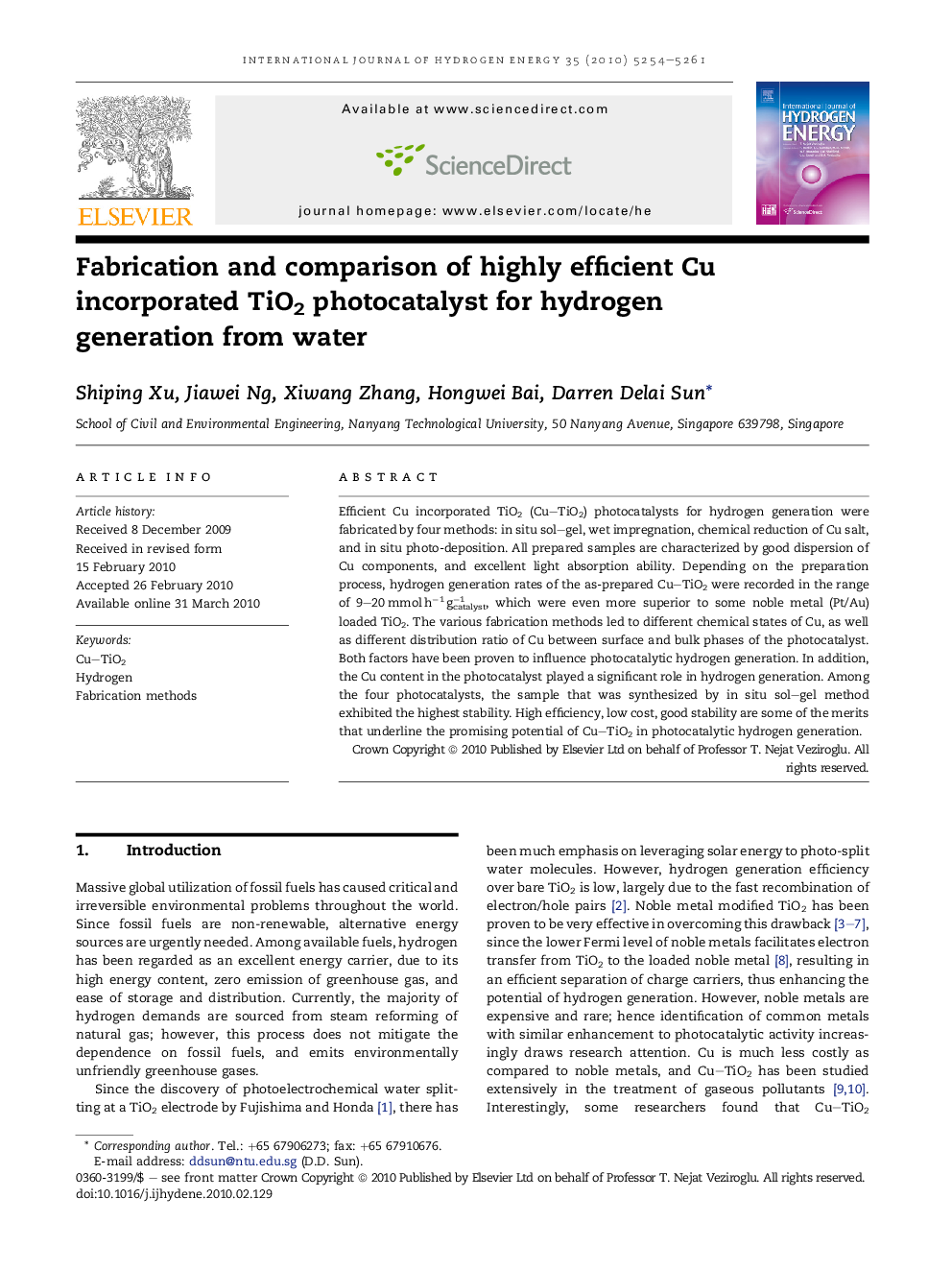| Article ID | Journal | Published Year | Pages | File Type |
|---|---|---|---|---|
| 1280545 | International Journal of Hydrogen Energy | 2010 | 8 Pages |
Abstract
Efficient Cu incorporated TiO2 (Cu-TiO2) photocatalysts for hydrogen generation were fabricated by four methods: in situ sol-gel, wet impregnation, chemical reduction of Cu salt, and in situ photo-deposition. All prepared samples are characterized by good dispersion of Cu components, and excellent light absorption ability. Depending on the preparation process, hydrogen generation rates of the as-prepared Cu-TiO2 were recorded in the range of 9-20 mmol hâ1 gcatalystâ1, which were even more superior to some noble metal (Pt/Au) loaded TiO2. The various fabrication methods led to different chemical states of Cu, as well as different distribution ratio of Cu between surface and bulk phases of the photocatalyst. Both factors have been proven to influence photocatalytic hydrogen generation. In addition, the Cu content in the photocatalyst played a significant role in hydrogen generation. Among the four photocatalysts, the sample that was synthesized by in situ sol-gel method exhibited the highest stability. High efficiency, low cost, good stability are some of the merits that underline the promising potential of Cu-TiO2 in photocatalytic hydrogen generation.
Keywords
Related Topics
Physical Sciences and Engineering
Chemistry
Electrochemistry
Authors
Shiping Xu, Jiawei Ng, Xiwang Zhang, Hongwei Bai, Darren Delai Sun,
